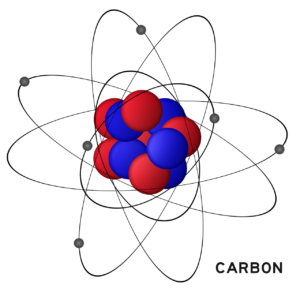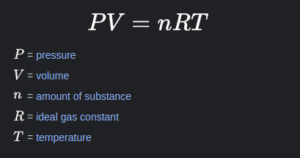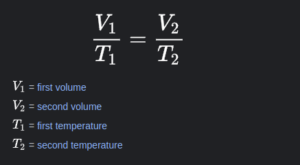Isomerism | Definition, Types, Structure, and Examples
1. Introduction
Isomerism, a fundamental concept in the realm of chemistry, unveils the intriguing diversity hidden within seemingly identical molecular formulas. At its core, isomerism describes the phenomenon where different chemical compounds share the same composition of atoms but adopt distinct structural arrangements or spatial configurations.
These compounds, known as isomers, serve as a testament to the intricate ways in which atoms can be connected and organised, leading to variations in their chemical and physical properties. As we delve into the world of isomerism, we encounter a rich tapestry of structural intricacies, encompassing multiple forms such as structural isomerism, stereoisomerism, and conformational isomerism. The exploration of isomerism not only deepens our understanding of molecular diversity but also underscores the complexity and versatility inherent in the molecular landscape of the chemical world.
2. Definition of Isomerism
Isomerism is a phenomenon in chemistry where chemical compounds have the same molecular formula but exhibit different structural arrangements or spatial orientations of their atoms. These compounds, known as isomers, share the same number and types of atoms but differ in the way these atoms are connected or arranged in three-dimensional space.
Isomerism is a result of the diverse ways in which atoms can be arranged to form molecules with identical chemical compositions but distinct chemical and physical properties. There are various types of isomerism, including structural isomerism, stereoisomerism, and conformational isomerism, each characterized by different aspects of molecular arrangement and bonding.
3. Types of Isomerism
- Structural Isomerism: Structural isomers are compounds that share the same molecular formula but differ in the arrangement of their atoms. This type of isomerism includes chain isomerism, where the carbon backbone varies, and positional isomerism, where functional groups occupy different positions on the carbon chain.
- Stereoisomerism: Stereoisomers have the same molecular formula and connectivity of atoms but differ in the spatial arrangement of their atoms in three dimensions. This category includes geometric isomerism, where atoms are arranged in a fixed order but have different spatial orientations, and optical isomerism, where molecules are non-superimposable mirror images, known as enantiomers.
- Conformational Isomerism: Conformational isomers are different spatial arrangements of the same molecule that arise from the rotation of single bonds. These isomers, also called conformers, do not involve breaking any bonds but represent different orientations of the molecule in space.
- Tautomerism: Tautomerism involves the existence of two isomeric forms that rapidly interconvert, often through the migration of a proton and the rearrangement of double bonds. Keto-enol tautomerism is a common example, where a compound oscillates between a keto form and an enol form.
- Metamerism: Metamerism is a type of isomerism observed in compounds with a heteroatom, such as oxygen or nitrogen, where different alkyl groups flank the heteroatom. The overall molecular formula remains the same, but the alkyl groups attached to the heteroatom vary.
- Coordination Isomerism: Coordination isomers occur in coordination compounds, where the arrangement of ligands around the central metal atom differs, leading to isomeric forms. This type of isomerism is common in transition metal complexes.
Exploring these diverse types of isomerism unveils the intricate variations that can exist within chemical compounds, contributing to the vastness and complexity of the molecular world.
4. Structure of isomerism
Structural isomerism is a type of isomerism where compounds share the same molecular formula but differ in the arrangement of their atoms. This category encompasses various subtypes, each highlighting distinct aspects of structural diversity. Here are some key types of structural isomerism:
4.1. Chain Isomerism
In chain isomerism, the carbon skeleton or backbone of the molecule varies. Isomers may have different arrangements of straight chains, branched chains, or even cyclic structures while maintaining the same molecular formula. This type of isomerism is prevalent in hydrocarbons, such as alkanes and alkenes.
4.2. Positional Isomerism
Positional isomerism arises when functional groups or substituents occupy different positions on the carbon chain. Despite having the same molecular formula, compounds with positional isomers exhibit distinct chemical properties due to the altered position of specific groups.
4.3. Functional Group Isomerism
In functional group isomerism, compounds with the same molecular formula have different functional groups. This can involve the rearrangement of atoms to create distinct functional groups, leading to variations in chemical reactivity and physical properties.
4.4. Skeletal Isomerism
Skeletal isomers have different carbon frameworks, meaning the connectivity of carbon atoms differs. This type of isomerism is common in compounds with multiple substituents, resulting in diverse arrangements of the carbon backbone.
4.5. Tautomerism
Tautomerism involves isomers that rapidly interconvert, usually through the migration of a proton and a shift in double bond placement. Keto-enol tautomerism is a classic example, where a compound oscillates between a keto form and an enol form.
4.6. Ring-chain Isomerism
Ring-chain isomerism occurs in cyclic compounds, where isomers differ in their ring structure and chain arrangement. Compounds may exist as cyclic isomers or open-chain isomers, showcasing the versatility in structural arrangements.
Understanding these various forms of structural isomerism provides valuable insights into the diverse ways in which atoms can be organized within molecules, contributing to the rich tapestry of chemical compounds.
5. Isomerism Example
Let’s consider an example of structural isomerism with chain isomerism and positional isomerism:
5.1. Chain Isomerism Example: Butane and Isobutane
- Butane (C₄H₁₀): Butane is a straight-chain hydrocarbon with four carbon atoms in a linear arrangement. Its structural formula is CH₃-CH₂-CH₂-CH₃.
- Isobutane (also known as 2-methylpropane, C₄H₁₀): Isobutane, on the other hand, is a branched-chain isomer of butane. It contains four carbon atoms, but one of them forms a branch. Its structural formula is (CH₃)₃CH, indicating a branched structure.
5.2. Positional Isomerism Example: Butanol and Isobutanol
- Butanol (C₄H₉OH): Butanol is an alcohol with a straight carbon chain. Its structural formula is CH₃-CH₂-CH₂-CH₂-OH. The hydroxyl group (-OH) is located at the end of the carbon chain.
- Isobutanol (also known as 2-methylpropan-1-ol, C₄H₉OH): Isobutanol is a positional isomer of butanol. It has the same molecular formula but a different arrangement of atoms. In isobutanol, the hydroxyl group is attached to a carbon atom in the middle of the chain, creating a branched structure. Its structural formula is (CH₃)₂CH-CH₂-OH.
In both examples, the isomers have the same molecular formula (C₄H₁₀ for chain isomerism and C₄H₉OH for positional isomerism) but differ in the arrangement of their atoms, showcasing the concept of structural isomerism.
Conclusion
In summary, isomerism in chemistry reveals the extraordinary diversity that arises from shared molecular formulas. From structural variations in chain arrangements to spatial disparities in stereoisomers, the concept underscores the intricate possibilities within chemical compounds. This diversity, evident in phenomena like tautomerism and conformational isomerism, extends beyond theoretical understanding, finding practical applications in drug development, materials engineering, and beyond. Isomerism’s significance lies in its role as a gateway to tailored molecular design, allowing scientists to manipulate properties for specific purposes. As researchers delve deeper into isomerism, they uncover nuanced relationships between structure and function, enriching our comprehension of the molecular world and opening avenues for innovation in diverse scientific fields. Isomerism, with its manifold manifestations, exemplifies the captivating complexity inherent in the seemingly simple realm of chemical composition.





